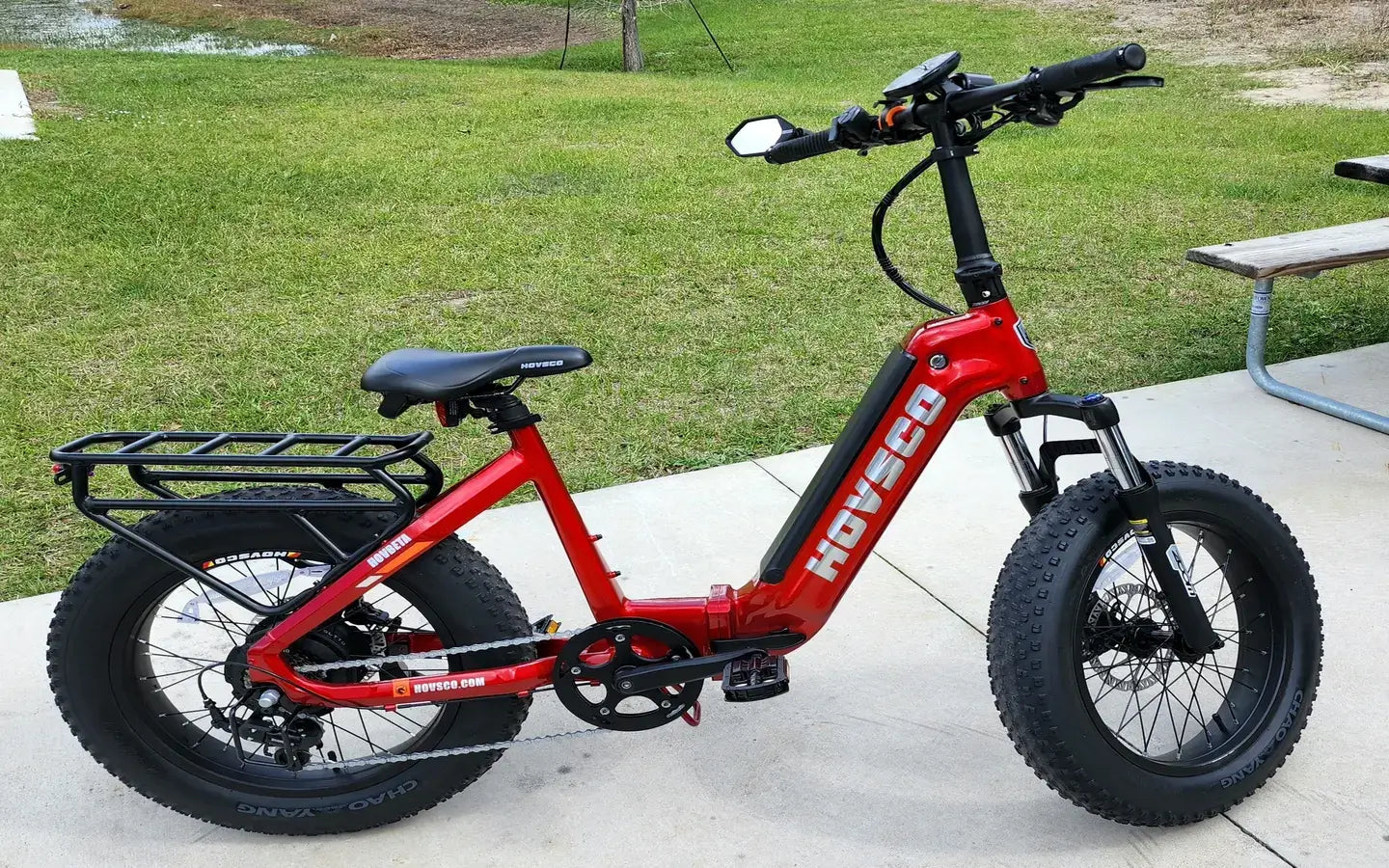
- by LiuJiazhu
What Are the Benefits of Electric vs Traditional Bikes for Adult Riders?
- by LiuJiazhu
Electric bikes provide motorized assistance, reducing physical effort and enabling longer commutes, while traditional bikes offer health benefits through exercise and lower environmental impact. E-bikes suit hilly terrains and time-sensitive riders, whereas traditional bikes excel in cost efficiency and mechanical simplicity. Choosing depends on fitness goals, terrain, and commute distance.
Electric bikes use a battery-powered motor to assist pedaling, reducing rider effort, while traditional bikes rely solely on human power. Motor assistance, energy efficiency, and physical exertion define their distinct operational frameworks.
Electric bikes integrate a motor and battery, providing adjustable assistance levels via torque or cadence sensors. This allows riders to tackle hills or headwinds effortlessly. Traditional bikes, however, depend entirely on leg power, requiring sustained energy output. Pro tip: E-bike motors typically offer 250–750 watts of support, extending range up to 100 km per charge. For example, commuting 20 km daily on an e-bike consumes minimal rider energy compared to traditional cycling. But what if the battery dies? Unlike traditional bikes, e-bikes become heavier to pedal without motor support. Practically speaking, e-bikes merge cycling benefits with motorized convenience, ideal for mixed-terrain or multi-stop trips.
E-bikes prioritize durability to support motor and battery weight, using reinforced frames and wider tires. Traditional bikes emphasize lightweight agility with carbon fiber or aluminum alloys for speed and maneuverability.
Electric bike frames are built to handle 15–30 kg of additional weight from components, often using steel or reinforced aluminum. Traditional bikes minimize weight, with high-end models under 10 kg for racing. Wider tires (2.1–2.5 inches) on e-bikes enhance stability under motorized speeds, while road bikes use 23–28 mm tires for reduced friction. Pro tip: E-bike batteries (36V–48V) add bulk but are often removable for charging. Consider storage space—e-bikes require secure areas to protect electronics from theft or weather. For instance, a commuter e-bike’s integrated lights and racks add utility but reduce portability compared to a minimalist road bike.
| Feature | Electric Bike | Traditional Bike |
|---|---|---|
| Frame Material | Reinforced steel/aluminum | Carbon fiber/aluminum |
| Average Weight | 20–30 kg | 8–15 kg |
| Tire Width | 2.1–2.5 inches | 1.0–2.0 inches |
E-bikes excel in hilly areas, long commutes, or for riders with physical limitations. Traditional bikes are optimal for fitness routines, short trips, or budget-conscious users seeking minimal maintenance.
For urban commuting, e-bikes reduce sweat and fatigue, especially in traffic. A 10 km ride on an e-bike takes 25–30 minutes with moderate effort, whereas traditional cycling demands 40+ minutes of exertion. However, traditional bikes avoid range anxiety—no need to track battery levels. Pro tip: E-bike throttle modes can assist riders recovering from injuries, but check local laws; some regions restrict throttle-only operation. Imagine hauling groceries: e-bikes handle heavy loads effortlessly, while traditional bikes require stronger leg power. Yet, traditional cycling burns 400–600 calories hourly, aiding weight loss—a key advantage over motor-assisted rides.
Traditional bikes produce zero emissions, relying on human energy. E-bikes have a carbon footprint from battery production and electricity generation but offset car usage.
Lithium-ion batteries in e-bikes require mining rare metals, contributing to resource depletion. However, e-bikes consume 1–1.5 kWh per 100 km—far less than electric cars (15–20 kWh). Pro tip: Opt for e-bikes with recyclable batteries and solar charging to minimize impact. A study found e-bike riders replace 20–30% of car trips, reducing annual CO2 emissions by 225 kg. Traditional bikes, while eco-friendly, have limited range for replacing car-dependent lifestyles. Practically speaking, both bikes promote sustainable transport, but e-bikes bridge the gap for longer distances.
E-bikes face speed and power limits (e.g., 25 km/h in the EU), while traditional bikes have fewer restrictions. Licensing and helmet laws vary by region for e-bikes.
In the EU, e-bikes with motors over 250W or speeds exceeding 25 km/h require registration and insurance. Traditional bikes need no licenses, even for high-speed road models. Pro tip: Check if your e-bike qualifies as a “pedelec” (pedal-assist only) to avoid motorcycle-classification rules. For example, U.S. states like California mandate helmets for e-bike riders under 18 but not for traditional cyclists. Additionally, e-bike riders must use bike lanes where available, similar to traditional bikes, but face stricter enforcement if exceeding speed limits.
| Regulation | Electric Bike | Traditional Bike |
|---|---|---|
| Speed Limit | 25–32 km/h | None |
| Helmet Required | Often (age-specific) | Rarely |
| License/Permit | Varies by power | No |
E-bikes cost 2–4x more upfront ($1,200–$5,000) than traditional bikes ($300–$1,500) and require battery replacements every 3–5 years. Traditional bikes have lower long-term costs but need frequent drivetrain maintenance.
E-bike batteries degrade to 70–80% capacity after 500–1,000 cycles, costing $500–$800 to replace. Traditional bikes incur chain, cassette, and brake pad replacements—$100–$300 annually for heavy users. Pro tip: DIY maintenance on traditional bikes is simpler; e-bike diagnostics often need specialized tools. For instance, adjusting a derailleur versus troubleshooting a motor controller—the latter demands technical expertise. However, e-bike motors (e.g., Bosch, Shimano) often have 2–3 year warranties, mitigating repair costs. Consider this: A $2,000 e-bike’s 5-year cost with one battery replacement equals $2,500, while a $800 traditional bike might total $1,400 with maintenance—making e-bikes costlier but time-efficient.
Yes, conversion kits ($400–$1,200) add motors and batteries, but ensure frame compatibility and local legality for motor power limits.
Are e-bikes safer than traditional bikes?E-bikes’ higher speeds increase crash risks, but features like hydraulic brakes and LED lights enhance safety. Ride defensively and obey traffic laws.
Do e-bikes require insurance?In most regions, no—unless classified as mopeds. Check local laws for speed/power thresholds mandating coverage.
Share:
What Safety Features Protect Adult Electric Bike Riders?
What Are the Top Electric Bikes for Adult Urban Commuting?